Ms. Pinion’s Lilac
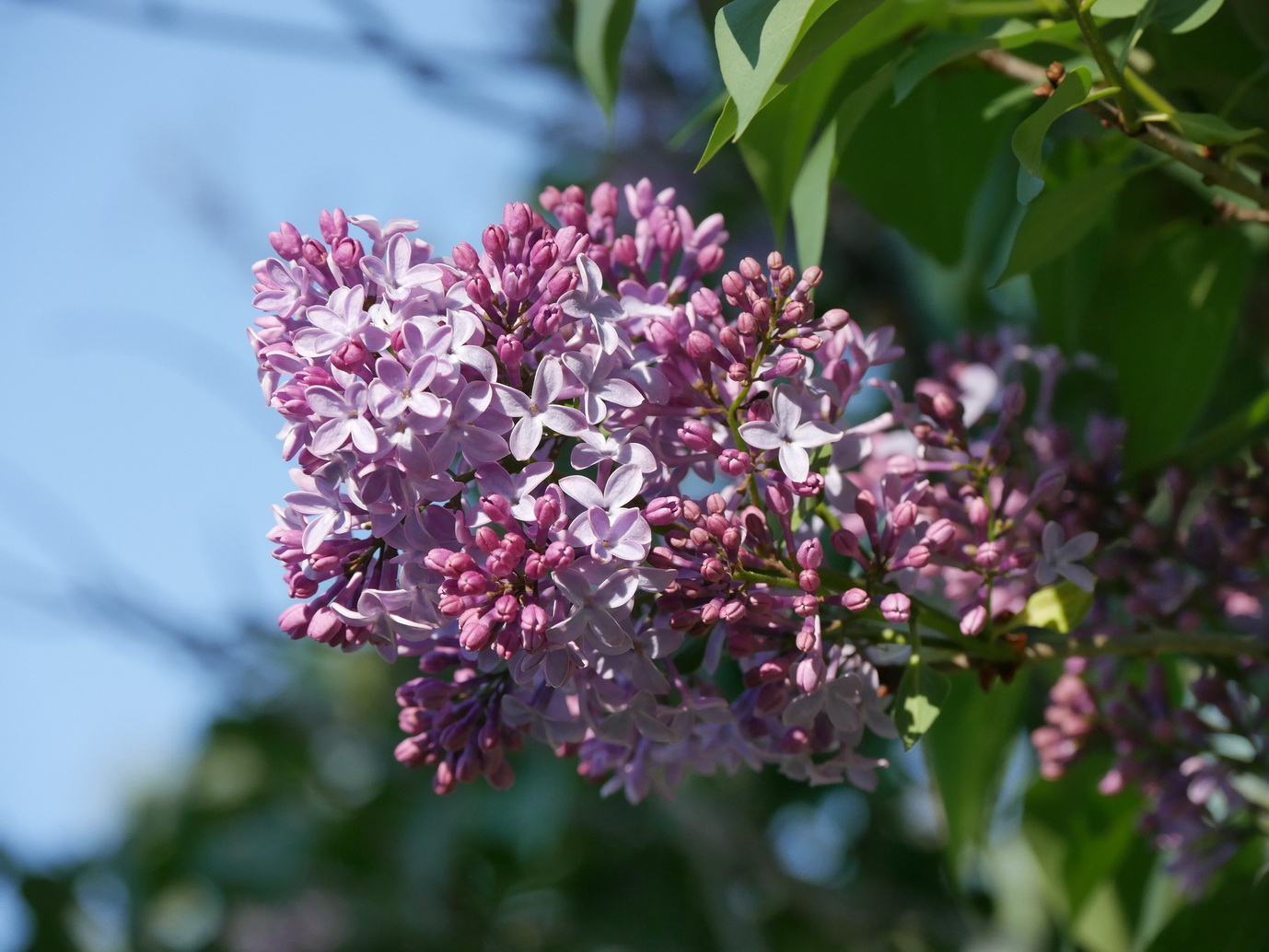
Legacy
My Flintstone, Georgia, house was built in 1951 by Martha and Jack Pinion. Almost everyone in this small community knew them, and everyone knew the Pinions’ house. That’s in part because Martha worked but a short walk from here, just past the end of the drive and through a narrow drift of woods, at the local high school. She was not only a Chattanooga Valley High School mathematics teacher, but also a neighbor to many children who passed through her classes. In quizzing a few former students, I learned that completing her classes was a challenging task. She held high expectations for her students, and they fondly remember her for the utmost she asked of them. Teaching, then, was one of Martha’s gifts to the community — it’s now part of her local legacy, as is this house where she and Jack made their home for more than 60 years.
When I bought their place, I saw the verity and the beauty of that legacy in the splendid siting of the house on the property, the inclusion of many large windows in the plan, and their choice of cedar shake shingles for siding. With foresight and discerning choices, they crafted a distinctive home with a graceful presence from the shell of a traditional mid-century rancher. Yes, I modernized the house by updating the mechanicals and by wholly refurbishing the interior, but its enduring legacy was the Pinions’.
The landscape plantings they established were conventional, and scattered. The expansive lawn was lightly peppered with crape myrtles, red tips (Photinia), and a few Bradford pears, while the foundation was masked with Camellia, Nandina, Azalea, and, yes, ‘Green and Gold’ Euonymus, a delightful plant to some, repugnant to others, proving yet again that beauty is indeed in the eyes of the beholder. All were popular, landscape plants in vogue at one time or another during the six decades that the Pinions lived here. When I purchased their place, I already knew these plants well: I had planted them, coddled them, and sometimes purged them from landscapes, as they trended up and down during my career. They are not the stuff of native landscapes, but, having shared a measure of life with them, I desired to honor them. I held to that honor early in this landscape renovation, but it evaporated soon after I faced it; I balked only briefly before removing all but a few of the plants. The foremost exception was a suitable planting of azaleas, Hydrangeas and Hostas that kept company with a large Chinese holly at the back entrance. I preserved this planting because it works well design-wise and because a pair of mocking birds nests within the holly’s dense, spiny canopy each year. Though the decisions on whether to keep or remove these plants were not entirely clear-cut, I made them readily.
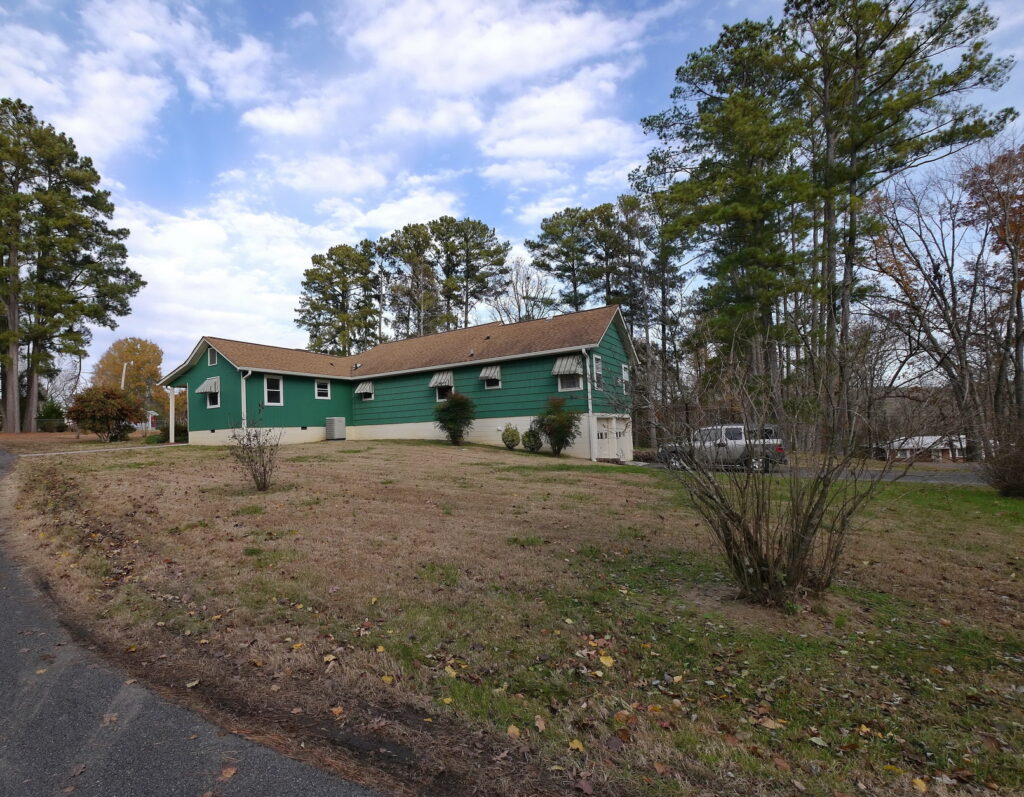
On the other hand, there was one non-native plant at the corner of the back drive that I could neither fully embrace nor forsake. I walked by it almost every day. I knew this plant well, but its presence and fleeting beauty made me dubious. A large, mature, lavender-pink blooming lilac, it was growing in a weedy lawn area that I was slowly converting to native plants. I invariably worked around the lilac as if it were somehow extraordinary, rooted in the ages, sacred. Swallowtail butterflies flocked to it for nectar as it flowered gloriously in late spring of 2015, but when the blossoms faded a few weeks later, it became lost in the surrounding greenery. (Lilacs often disappear like that in the early summer landscape.) When a long late-season drought came the following year, a few large branches died, and the shrub fell back, leaving empty space around it. The once-glorious lilac was now diminished, less present, and perhaps, I thought, expendable. I still wonder how I came to that conclusion with so little remorse.
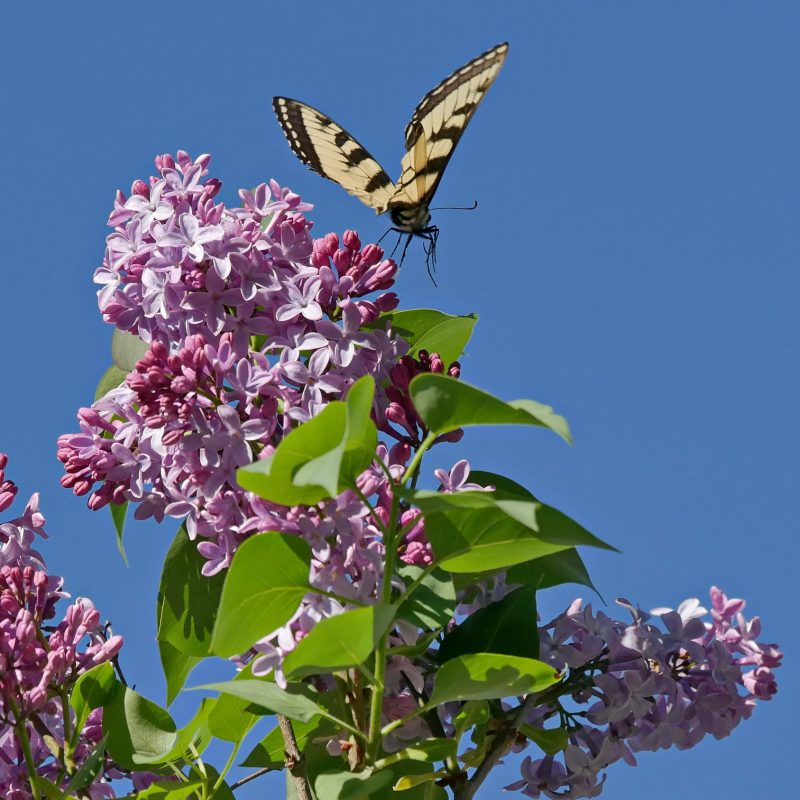
Far from Home
Most lilacs are of north Asian (China, Japan, Korea) descent. True northern plants, they thrive in the cooler, drier air of our upper Midwestern and New England states, but often languish in the long humid summers of the Southeast. The lilac in my yard had proven the exception — it had withstood decades of Southern summers, including the 2016 drought, but in that drought’s wake it was left thirsty and bedraggled. Thankfully, restorative winter rains soon came, and the following spring it sprouted healthy, deep green foliage from the crown. It appeared on the verge of a renewal. Still, it felt dispensable to me, for a reason that I am only now able to acknowledge. That is, I was obsessed with going native, and the lilac was an impediment to my ever-expanding natural landscape. As it happened, another year passed, and in spring 2018 I had a few extra native shrubs that needed planting. I looked briefly at the void around the lilac, but it was not enough space for them. Over the next few weeks, I became fixated, looking first at the lilac, then at the extra shrubs, then back at the lilac. I began imagining the lilac gone, with the new shrubs filling the opening. Envisioning one landscape plant out and another in its place is essential to the practice of landscape renovation, but it can seem ruthless and it does create quandaries. It’s different than the dilemma of removing invasive plants — arguably, that has a clear biological benefit. Here, that benefit was not so clear. Moreover, this plant had a cultural legacy; it was, after all, “Ms. Pinion’s Lilac.” It had a local meaning deeply rooted in Chattanooga Valley, and beyond that, for me, it had a distant, a more abiding meaning that came through time, from my Northern roots, far from Flintstone. Five hundred miles away from my childhood home, that lilac had quietly connected me to my new Southern home. It rooted me here: I was attached to Ms. Pinion’s lilac.
It was now late spring and time was driving my quandary. Spring planting season was slipping away and those surplus native shrubs needed to “get out,” as gardeners say, out of their containers — they were longing to be planted. Early on a beautiful Friday morning, then, I got out my digging tools and set them near the lilac. It was Decision Day, and, tentative as I was, intuition slowly set my course. After gazing at the lilac, still tattered from drought, I looked at the nearby oaks and maples, the very first plants I had brought to this land. I had purchased them at a clearance sale in late November 2014, as a big-box store made floor space for Christmas trees. They were in small containers, their trunks little more than finger-thick, but three and a half years later, those trunks were nearly 3” thick. The trees were aspiring to be woodland, their canopies reaching toward the sun-loving lilac, soon, I figured, to engulf it. With ambivalence mounting, I paused to consider something novel: I looked southward to a loblolly pine colony just across the drive, pines that had shared a home with this lilac for decades, and I asked them. For the first time in my long career I sought out the neighboring plants for advice. I inquired of their sentiment on keeping or removing Ms. Pinion’s lilac. What silently came back to me was that this lilac and these pines were tied together; in shared soil, they were woven into the fabric of this land. Though they most certainly came from different homelands, they were now at home together. I looked one last time toward the advancing oaks and maples, new threads I had introduced into the weave, native trees that will one day be part of this land’s legacy. It’s a legacy that will be bound, not to the fragrance or color of spring flowers, not to the gentle warmth of late spring, but rather to the deep cool shade these trees will one day bring to oppressive summer afternoons. Should that legacy become manifest, then the sun-loving lilac had no chance, but those extra shrubs? Now, they — arrowwood Viburnums, a notoriously good native plant for growing along the shady edge of woodland — they had prospects. My dilemma now resolved, I was able to muster a compromise: I would preserve the legacy of this plant and of Martha who planted it. I dug out three clumps of young shoots at the edge of the lilac and potted them up. Next, I dug out the gangly remainder and took it to the woodland brush pile to be gathered back to the land. Finally, I planted the three young, budding Viburnums to replace Ms. Pinion’s lilac.
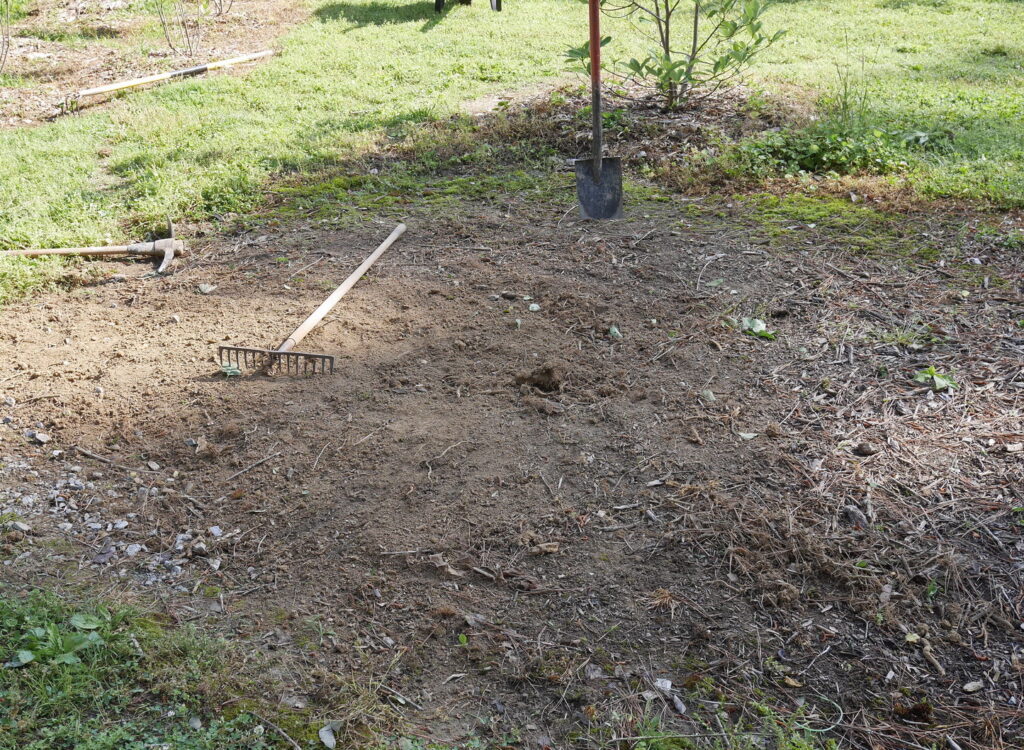
Heritage, Nostalgia, Illusion
The feelings that accompanied the lilac’s removal still linger. The sadness, the honor and its passing, the ambivalence, they’re here. It’s the past longing itself into the present, living in me and in this landscape through the fledgling lilac shoots I preserved. I planted them on the opposite side of the house near the edge of pines. I think of Martha every time I walk by them. I’ve begun noticing, though, that while they still have good color, they’re not prospering. Now, it seems, they are living too close to the pines’ edge, and I doubt they will ever be at home in its dry, root-packed soil. Soon I will move them to a more welcoming place in moister soil.
All of this brings to mind the many quandaries we face in the garden. Our relationship with the land is forged, not only through our encounters with nature, but also through our local cultural heritage. Regrettably, that heritage has rarely been informed by ecology; it does not easily meld with the new understandings we have garnered through working with the native landscape. We will always identify with and be attached to the plants and gardening skills our forebears passed along to us; that personal attachment is too deep to dismiss. Currently, though, we are being asked to renew that heritage with a clear ecological interpretation of the landscape. In making choices based on that interpretation, we may lose a sense of self founded in our past, especially when those choices involve removing plants that hold deep meanings for us, those connected to place and related to family or home. The beautiful flowers, the fragrance, the butterflies can elicit dreamy memories of childhood days: days of early summer, warm — but never hot, the sun shining—always shining, on everyone, long before we knew that climate change was heating the air, long before we knew that a virus called COVID-19 would scatter us into seclusion, long before the time, perhaps, when we would acknowledge the racism and injustice that have hidden amongst us.
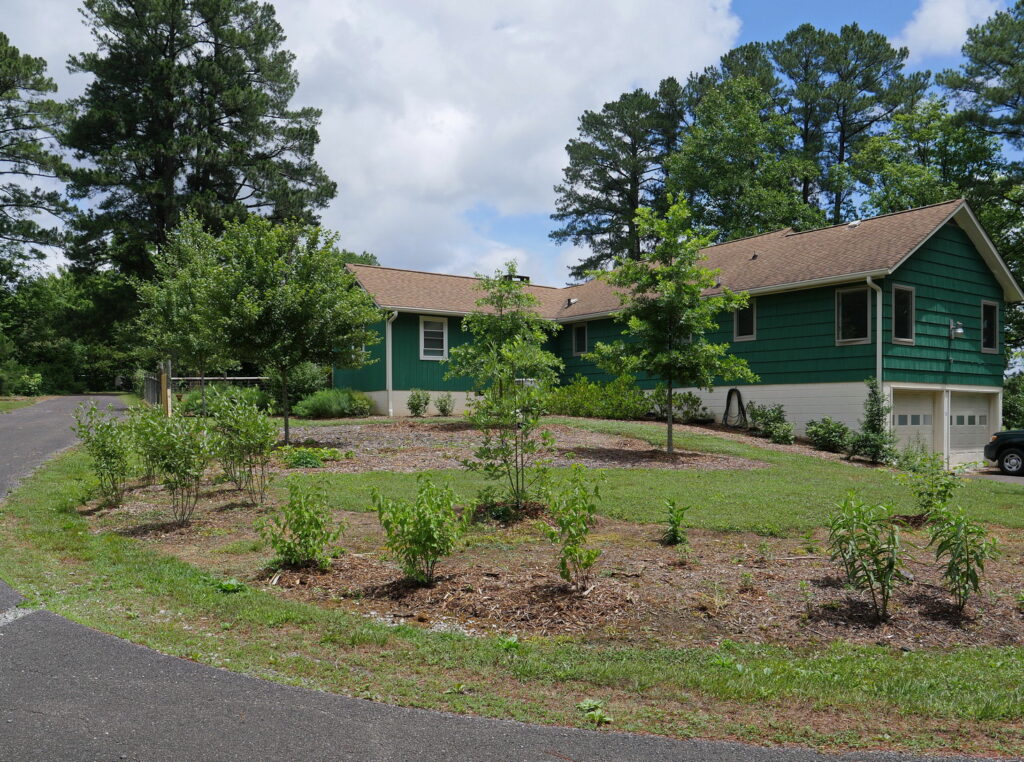
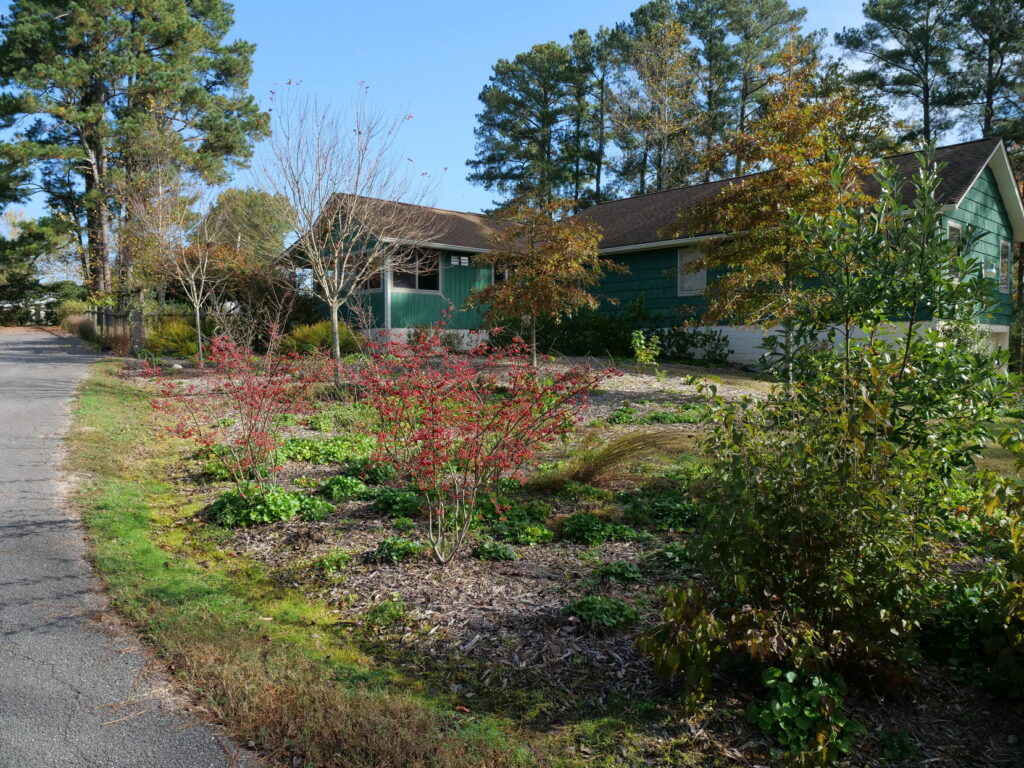
It’s nostalgia at work here, nostalgia that embraces and upholds an illusion — the delusion, really, that the lilacs and roses and peonies of our childhood homes are the plants of our homeland. No, these plants may be dear to us, but it’s this woodland, this shady deciduous forest of oak and hickory and maple that is our homeland. This forested land is the place where many of our ancestral stories began, and, though we have long failed to honor this land, it steadfastly remains the sacred land underlying our continuance. It’s the homeland I am now working to restore, in the place where I learned to let nature happen. It’s a legacy in the making, perhaps, of an ecological, self-conserving landscape, for us to pass on to others.
For now, though, I will seek contentment through my search for a sunny opening, an empty space, here on this parcel. There I’ll replant and restore the missed feelings of home and the legacy of Ms. Pinions’ Lilac.
Epilogue
In a recent conversation with Ms. Pinion’s daughter in Atlanta, I learned that this lilac has deeper roots than I thought: Its journey to Flintstone began some miles south of here in an area of Chattanooga Valley called “the Cove.” Martha brought this lilac from her mother’s garden and planted it here after she and Jack built their home. And those lilac shoots I preserved? They have a new home too, just across the way in a sunny opening with some newly-transplanted native shrubs. There, I will coddle them while they weave themselves back into the fabric of our native land.
As always, many thanks to Emily Campbell, whose editing skills worked this post into a final form that is clearer, more concise and immensely more pleasing to read.